A Note from Music Director James Conlon on Highway 1, USA and The Dwarf
Part Two: Zemlinsky's Time Has Come
The music of Alexander Zemlinsky remained buried for decades in the wake of the destruction caused by the totalitarian Nazi regime. Dozens of composers and thousands of compositions are still largely unknown to lovers of classical music and opera. One of the glories of Western civilization, the German classical music tradition experienced the most terrible upheaval in its history by the genocide of the Nazi regime. In an ironic paradox of history, by proclaiming themselves a master race and attempting to impose this on the rest of the world, the Nazis marched to folly and dealt the most self-destructive blow possible to their own proud culture. In trying to “purify” their society, they tore at its heart and soul. They murdered some of their greatest talent, forced others to flee, and scorched the earth of the precious milieu that had nurtured this great culture.
The composers whose music they banned were a diverse group. Some were celebrated in their own time. Others struggled for recognition and livelihood. There were the avant-garde, the conservatives, the serial composers and those who rejected them. There were those who flirted with jazz, cabaret and popular music and those who were musical elitists. Many were closely acquainted and were lifelong friends. Others competed and disliked each other. Still others were completely isolated from the mainstream. What unites them under the heading of “Recovered Voices” is the fate of their music. Much of it seemed buried with them and remained so in neglect, some for half a century.
The Dwarf
“Write for me a text on the tragedy of the ugly man.” With these words, spoken in 1909 by Zemlinsky to his colleague, the composer-librettist Franz Schreker, the seeds were planted that would eventually cause The Dwarf (Der Zwerg) to spring forth. Schreker accepted the commission to write a libretto but liked it so much he asked Zemlinsky to release him from the contract in order to use it for his own opera. This he did, and it was to be known as Die Gezeichneten [The Marked Ones / The Stigmatized]. Zemlinsky was surely familiar with Schreker’s ballet The Birthday of the Infanta, and he had conducted the Viennese premiere of Richard Strauss’s Salome. Both works were based on Oscar Wilde, and Zemlinsky’s fascination with the Irish author would first produce the opera A Florentine Tragedy (1917). But the idea of “the ugly man” persisted to haunt him. He would find his subject also in Wilde, taking inspiration from the same 1891 short story that inspired Schreker’s ballet. Zemlinsky’s opera would emerge as The Dwarf and come to life at the Cologne Opera in 1922, conducted by Otto Klemperer (as previously mentioned).
But the story really begins in 1900. Zemlinsky meets and takes on a beautiful and fascinating young music student. They fall in love. She mocks his ugliness although she is madly attracted to him and his charismatic personality. She abandons him for composer Gustav Mahler in 1901. Zemlinsky will spend decades exorcising the ghost of this passionate love. He suffers from complexes about his own ugliness and small stature. Alma remarks how strange it was to walk with him, for he only came up to her shoulders. He will treat this subject finally after 20 years. The Dwarf, together with A Florentine Tragedy, will plumb these psychological depths. Together with Strauss’s Salome, they produce a trilogy of three one-act masterpieces, in my opinion, based on Wilde.
This is not the Wilde of the comedy of manners of The Importance of Being Earnest, but the dark penetrating author of The Picture of Dorian Gray. The themes are vintage Wilde: beauty and ugliness, desire and disillusionment, the paradox of the human soul, the hypocrisy of society. Outward beauty and inner corruption and…the mirror!
Wilde’s idea for this story owed its genesis to Diego Velazquez’s 1656 masterpiece of Spanish painting, Las Meninas [The Ladies in Waiting]. King Philip IV’s court painter portrays a female dwarf in this painting, and he depicts the court dwarf Sebastian de Morra in another. Like Rigoletto’s Duke of Mantua (really King Francois I of France in the Victor Hugo drama on which Verdi’s opera is based), many members of the royalty retained dwarfs for their personal amusement. Eduardo Zamacois was another Spanish painter drawn to the subject.
Zemlinsky’s Dwarf is physically ugly and misshapen but possesses a generous, loving and artistic soul. The Infanta, daughter of King Philip II of Spain (the father of Don Carlos), is outwardly gracious but inwardly shallow, the child of privilege. She is fascinated, even attracted to him at first, because he speaks with a voice that has a depth she has never heard at the court. The parallels with Salome are several. The daughter of Herodias is enthralled with Jokanaan (John the Baptist) for similar reasons. Salome and the Infanta are outwardly beautiful and inwardly corrupt. The Dwarf and Jokanaan are outwardly grotesque and inwardly inspired and inspiring. The Dwarf (Zemlinsky) loves the unattainable Infanta (Alma). Salome desires the inaccessible prophet and destroys him through her cruelty to satisfy those desires. The Infanta plays with the Dwarf, as a young girl with a toy, and destroys him by her incomprehension. Only the empathic menina Ghita, the Infanta’s favorite maid (an invention of the composer) feels his pain, realizes the danger for him and warns him not to approach the throne, where a mirror is to be found.
The Dwarf’s tragedy is that of lost innocence. Having been brought up in the wild, he has never seen a mirror. He does not know he is misshapen. He knows only that, wherever he goes, people gather and laugh and are joyful when they see him. With his poetic and humane soul, he naively believes himself as beautiful physically as his intentions. He does not realize that those who see him are mocking him. His enemy is the mirror because it will reveal the harsh truth. From their pre- and post-Freudian perspectives, author and composer are peering into the unconscious. The answer is chilling. “Dwarf, o Dwarf…God has created all of us blind about ourselves,” Ghita cries out. Is it not perhaps better that we remain so? Contrary to the ancient Greek admonition, is it better not to know thyself?
Zemlinsky knew himself and had the strength to remain true to himself. He followed his isolated path, stubbornly refusing the least artistic compromise. Considered too modern by the conservatives, too resistant to serialism by the avant-garde, he walked alone, assuming all of the consequences. His was a life of consistent disappointment and ill fortune. He was to flee the Nazis twice, from Berlin in 1934 and Vienna in 1938. He was to live out his last years alone and virtually forgotten in Manhattan until his death in 1942. His friend, brother-in-law and one-time student Arnold Schoenberg penned these words from his home in Hollywood in 1949. “I have always firmly believed that he was a great composer, and I am still convinced of this today…I know of no other post-Wagnerian composer who was able to fill the requirements of the theater with a nobler musical substance… Perhaps his time will come sooner than one expects.”
We perhaps can learn much about today's world from Wilde's admonition and from his mirror into the past. Perhaps we can realize Langston Hughes' dream from his distant words. Perhaps the music of Still’s and Zemlinsky can accomplish that for us.
Click here to read Part One: Exiled to America, Exiled in America.
James Conlon is the Richard Seaver Music Director of LA Opera. This essay is partially revised and revisited from 2008. © 2024 James Conlon




